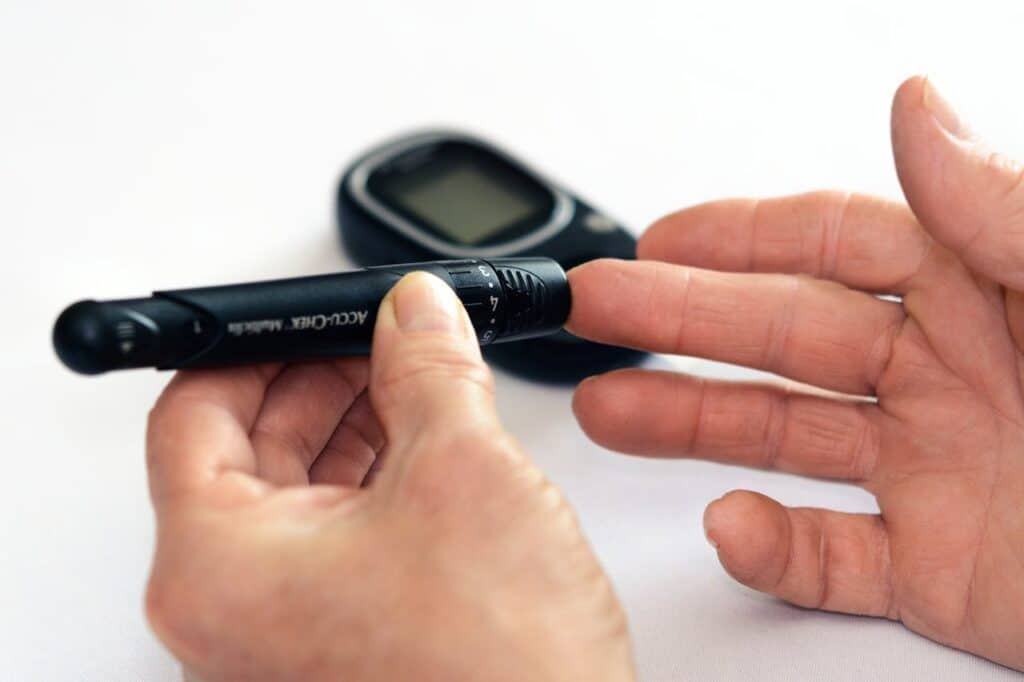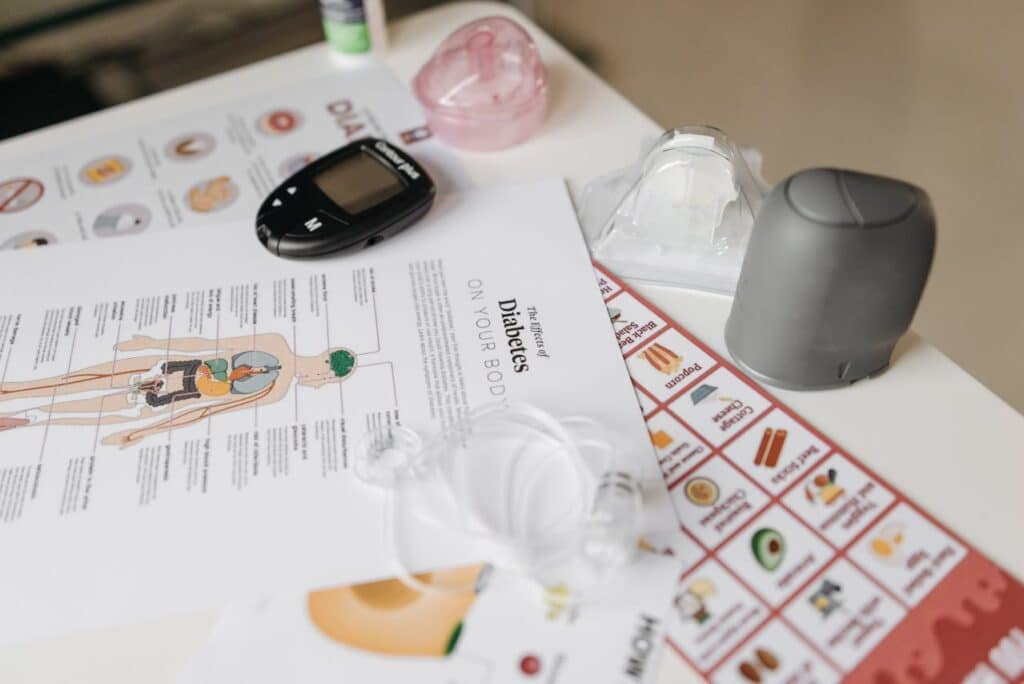
Sliding scale insulin therapy, a frequently administered insulin regimen amongst diabetic individuals, has been in use for many decades as one of the standard care procedures for avoiding complications.
If you have recently been diagnosed with diabetes, your healthcare provider may decide your course of treatment. However, it would be helpful for you to gain an insight into the management options so that you can make informed decisions and manage your treatment with your healthcare provider’s supervision.
This article highlights the process of sliding scale insulin therapy and the various aspects associated with the treatment procedure. It also weighs the procedure against other insulin therapy regimens.
Table Of Contents
ToggleWhat Is Sliding Scale Insulin Therapy?
Sliding scale insulin therapy is a flexible approach to managing blood sugar levels with fast-acting insulin.
Unlike a fixed-dose regimen where you take the same amount of insulin before each meal, a sliding scale tailors the dose to your body’s specific needs at that moment.
This customization is achieved through a finger prick test that checks your blood sugar level right before a meal. Armed with this reading, you’ll refer to a personalized chart created in collaboration with your doctor.
This chart acts as your guide, translating your blood sugar reading into a specific insulin dose. The chart factors in two key variables:
- Your individual sensitivity to insulin: some people are naturally more insulin-resistant than others;
- The amount of carbohydrates you typically consume at meals: carbs break down into sugar in the body, so a meal higher in carbs may necessitate a higher insulin dose.

How Does the Sliding Scale Work?
For most sliding-scale therapy regimens, the individual’s blood sugar level is checked through a glucometer around four times a day, with a gap of five to six hours. Individuals usually need to check their levels before meals or their bedtime. Since insulin is administered before mealtime, usually fast-acting insulin is administered for the sliding scale therapy to work effectively.
Here is how the regimen usually works.
You need to check blood glucose levels through the glucometer at least 15 minutes before taking a meal. You also need to check the levels 15 minutes before your bedtime.
In case the blood glucose level is above 150mg/dL, you may need to take certain insulin units prescribed by your doctor. Generally, it implies that you may have to take 1 to 3 insulin units for every 50 mg/dL above 150 mg/dL, as shown in your glucometer.
In case your blood sugar level before the meal is within the normal range, it doesn’t mean you can do without administering insulin. Even if the value is less than 140 mg/dL, you may still have to take fast-acting insulin. It all really depends on what your healthcare provider has suggested, as each diabetic’s case is different.

The 15-minute window for checking the blood sugar value is advised, as this is how much it takes for the fast-acting insulin to take effect. It starts working within 15 minutes of administration and stays effective for around two to four hours.
The dose can be a fixed number of units you have to take with each meal or a variable amount that depends on the amount of carbohydrates you consume in the deal; for instance, you may need to take 1 unit for every 20 grams of carbohydrates consumed.
How To Read the Sliding Scale Chart?
Your insulin sliding scale chart is like a personalized roadmap for navigating your pre-meal insulin needs. Here’s a breakdown of how to interpret it:
- Blood Sugar Levels: The left side of the chart will typically list blood sugar readings in ascending order, ranging from low to high. This reflects the pre-meal blood sugar level you get from your finger prick test.
- Dosage Scale: Across the top of the chart, you’ll likely find different dose categories, such as low, moderate, and high. It can also be represented as insulin sensitivity, with high insulin sensitivity, normal insulin sensitivity, and high insulin resistance. Your insulin sensitivity can change as the day progresses, and that’s why you have three separate columns to adjust the dose in accordance with the time of day/meal.
- Finding Your Dose: Once you’ve identified your pre-meal blood sugar on the left side, look at the three columns with low, moderate, and high dose scales. Locate the intersection point of that row and the correct column. The number displayed at this point represents the recommended insulin dose for that specific combination.
For example, if your pre-meal blood sugar is 150 mg/dL, you’d find the row for 150 and the column for your insulin sensitivity for that time of the day. The number at the meeting point would be the insulin dose you should take before that meal of the day.
Your doctor will personalize the chart based on your individual response to insulin and your typical dietary patterns. It’s crucial to discuss the chart with your doctor and understand any specific instructions they may have regarding its use.
The Challenges of Sliding Scale Insulin Therapy
The sliding scale insulin therapy is a more precise method than other regimens, as it considers the exact blood sugar levels before insulin is given. However, it is based on the assumption that the individual will consume a fixed carbohydrate portion in the particular meal. Here are a few concerns with this management protocol.
It may not be effective in managing blood sugar
Sliding scale insulin therapy is basically a reactive strategy designed to respond to elevated blood sugar levels. Although hospital and nursing staff use it commonly over the years, scientific evidence suggests it may not be very effective in regulating or lowering blood sugar levels in patients.
May lead to prolonged health issues
Since it is based on the assumption of a fixed amount of carbohydrate consumption during the meal, it may at times result in very low blood sugar levels. It is also why individuals using this method may find themselves staying at hospitals longer than individuals using other methods such as the fixed-dose insulin therapy, which we will discuss later.
Does not consider personal factors
Another noteworthy aspect is that sliding-scale therapy does not account for personal factors such as the amount of carbohydrates in the diet. Individuals may take the higher or lower amount in a particular meal based on their preference. Also, there may be “hidden carbs” in certain foods that the patient does not know about it.
Similarly, it also does not account for the individual’s weight, as, with this method, two individuals having different weights may be getting the same amount of insulin. Moreover, the sliding scale method also does not consider the amount of insulin the individual may have been getting in the past or how the person responds to insulin resistance.
It may not be convenient
As mentioned in the regimen process, individuals using sliding scale therapy need to check their blood sugar multiple times a day. It can be quite a hassle and also troublesome if you don’t like pricking your fingers.
Requires a strict diet
Unless you modify the insulin units according to the carbs consumed in a particular meal, you may be bound to keep your carbs within a certain range in every meal. You also need to be consistent with your meal timings and have to take your meals around the same time every day (which can be a major pain).
Sliding-Scale Insulin Therapy Today
While sliding scale therapy was once a common practice, current guidelines from the American Diabetes Association (ADA) recommend a more comprehensive approach for most people. This typically involves a combination of:
- Basal insulin: A long-acting insulin that provides a steady background level of insulin throughout the day.
- Bolus insulin: A rapid-acting insulin taken before meals to address the specific carbohydrate content of the meal.
This basal-bolus approach offers more precise control and reduces the risk of hypoglycemia.
Ultimately, the decision of whether sliding scale therapy is right for you should be made in consultation with your doctor. They can assess your individual needs and recommend the approach that best aligns with your goals for optimal diabetes management.

Other Sliding-Scale Insulin Therapy Alternatives
Insulin Pumps
For some people, insulin pumps offer a convenient and precise way to deliver both basal and bolus insulin.
These small, computerized devices deliver insulin continuously throughout the day (basal) with the ability to program additional bolus doses before meals or to correct for high blood sugar readings. Pumps offer greater flexibility and control compared to multiple daily injections.
Continuous Glucose Monitoring (CGM)
CGM systems are revolutionizing diabetes management by providing real-time data about blood sugar levels. A small sensor inserted under the skin transmits glucose readings to a receiver or smartphone app, allowing you to see blood sugar fluctuations throughout the day.
This valuable information can be used to adjust insulin doses and make informed decisions about diet and activity.
Insulin Pens
Many people with diabetes on basal-bolus therapy rely on insulin pens for administering their insulin. These user-friendly devices pre-filled with insulin cartridges or vials offer a convenient and discreet alternative to traditional syringes.
Insulin pens are easy to carry and use, making it easier to manage diabetes on the go. They also come with features like dose dials for accurate measurement and needle disposal containers for safe handling.

Fixed-Dose Insulin
As per the fixed-dose insulin therapy, individuals have to take a certain pre-determined amount of insulin units with every meal.
For instance, an individual may take five units at breakfast and six units at dinner. Since the insulin dosage is pre-determined, it does not take meals or macro-nutrients into account.
The fixed-dose insulin therapy is a convenient method to administer insulin, particularly for individuals who have just started using insulin. However, the consideration is that this method does not take into account the blood sugar level before meals. Moreover, it also does not account for the varying portion of carbohydrates consumed in a particular meal.
Carbohydrate to Insulin Ratio Therapy
In the carbohydrate to insulin ratio method, individuals need to take a certain amount of insulin according to a certain portion of carbohydrates they will consume. For instance, if for a certain meal of the day, your carbohydrate to insulin ratio is 10:1 and you consume 20 grams of carbs in that meal, you will need to take 2 units of insulin before eating to cover that meal. This is just a general example and should not be used in practice without the advice from your healthcare professional. Another consideration for this therapy is the correction factor. This element is intended to take into account the blood sugar level before a meal. To understand it better, let’s consider the following method. Let’s assume you want your blood sugar level to be under 140 mg/dL before a meal, but it is 160 mg/dL. If you have been directed to use one unit of insulin for every 50 mg/dL, then your value is above the normal range and you will need to take an additional unit of insulin before the meal to bring the sugar level within your desired range. The carb to insulin ratio is a little tricky to master and requires considerable knowledge and practice. However, if you can manage this method, you can effectively control your blood sugar level after the meal.Insulin Sliding Scale Therapy – Final Remarks
In conclusion, sliding-scale therapy’s limitations – reliance on a single data point, missed blood sugar fluctuations, and potential for hypoglycemia – make it less effective than some other modern approaches. Basal-bolus therapy, insulin pumps, and continuous glucose monitoring offer greater flexibility, precision, and real-time data for better blood sugar control. While these alternatives require more planning, the long-term benefits outweigh the initial challenges. Consult your healthcare team to find the best approach for you. Please do not incorporate any of these therapies without the consent of your healthcare professional. Resources:- McCall AL. Insulin therapy and hypoglycemia. Endocrinol Metab Clin North Am. 2012 Mar;41(1):57-87. doi: 10.1016/j.ecl.2012.03.001. Epub 2012 Apr 17. PMID: 22575407; PMCID: PMC4265808.
- Lee YY, Lin YM, Leu WJ, Wu MY, Tseng JH, Hsu MT, Tsai CS, Hsieh AT, Tam KW. Sliding-scale insulin used for blood glucose control: a meta-analysis of randomized controlled trials. Metabolism. 2015 Sep;64(9):1183-92. doi: 10.1016/j.metabol.2015.05.011. Epub 2015 May 21. PMID: 26059853.
- Duggan EW, Carlson K, Umpierrez GE. Perioperative Hyperglycemia Management: An Update. Anesthesiology. 2017 Mar;126(3):547-560. doi: 10.1097/ALN.0000000000001515. Erratum in: Anesthesiology. 2018 Nov;129(5):1053. PMID: 28121636; PMCID: PMC5309204.
- Umpierrez, G. E. “Basal versus Sliding-Scale Regular Insulin in Hospitalized Patients with Hyperglycemia during Enteral Nutrition Therapy.” Diabetes Care, vol. 32, no. 4, 31 Mar. 2009, pp. 751–753, https://doi.org/10.2337/dc08-2257. Accessed 14 March 2024.
Share:












